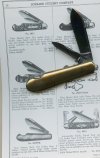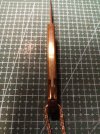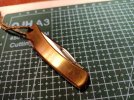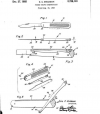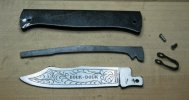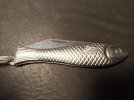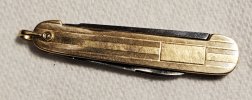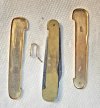Alex.Y.
Gold Member
- Joined
- Jan 11, 2021
- Messages
- 1,826
I always wondered how the handle halves are attached to each other in knives with seemingly solid brass handles, like the Rough Ryder on top:
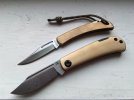
I mean, it is interesting to me to know specifically do they have regular brass pins which were polished to merge with handle surface, as it is usually made on bolsters?
Or there are pins integrated in one scale (like tommy pins on bolsters), and some seats (?) for them in the other scale, and while put into each other in the process of assembly there's some pressure or pounding implied after that wich makes such pins deform inside the seats and hence hold the handle halves from inside?

I mean, it is interesting to me to know specifically do they have regular brass pins which were polished to merge with handle surface, as it is usually made on bolsters?
Or there are pins integrated in one scale (like tommy pins on bolsters), and some seats (?) for them in the other scale, and while put into each other in the process of assembly there's some pressure or pounding implied after that wich makes such pins deform inside the seats and hence hold the handle halves from inside?








